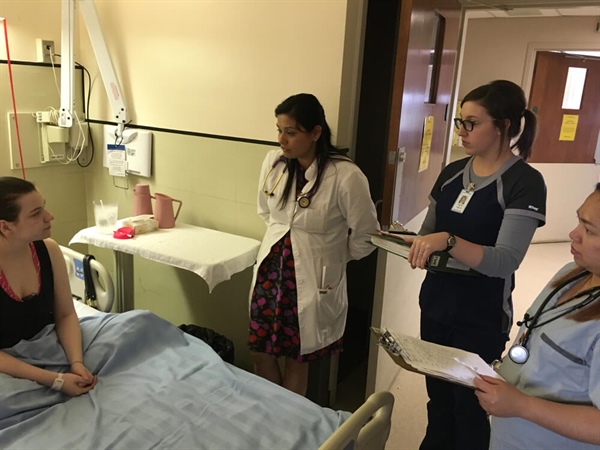Interdisciplinary bedside rounding (IDR) is a key improvement strategy of Saskatchewan’s Emergency Department Waits and Patient Flow initiative. This “best practice” form of patient rounding has been shown to reduce length of stay, keep patients safer, and improve teamwork and staff satisfaction.
A pair of new videos — featuring care teams on Pasqua Hospital’s Unit 4A (Regina Qu’Appelle Health Region) and the Surgery Unit at Moose Jaw’s FH Wigmore Hospital (Five Hills Health Region) — show how a variety of different health professionals come together to contribute to a patient’s care for the day and communicate with the patient about that plan. The videos highlight the key elements of interdisciplinary rounding that distinguish it from other forms of rounding.
RQHR’s Unit 4A and FHHR’s Surgery are among the early adopters of this approach to rounding, which is being implemented across the province, as part of the Emergency Department Waits and Patient Flow initiative the province-wide. At the end of March, 44 medical, surgical and critical care units in tertiary and regional hospitals reported they had begun incorporating key elements of IDR, as had many rural sites as well. The provincial target is to have all medical, surgical and critical care units in Saskatchewan’s regional and tertiary hospitals doing daily bedside interdisciplinary rounds by March 31, 2017. “Health regions are reporting positive response to the new approach from patients, families, and staff, improved discharged planning, and early signs that lengths of stay may be shortening as a result of the change,” says Adrienne Danyliw, project and policy consultant with the Initiative. “Patients have commented that IDR makes them feel more supported, better informed about their care plan, and more involved in their care decisions.”
The videos are posted on the Initiative playlist on HQC’s YouTube channel. Links to the videos are available in the Emergency Waits and Patient Flow section on the HQC website.



